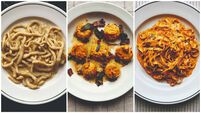Darina Allen: Samosas and curry that allow us to travel in our kitchens

Moroccan Harira Soup: a North African journey in a bowl
Doesn’t this Lockdown seems like an eternity – even the most resilient of us are really struggling to keep our spirits up and remain positive and optimistic for the sake of those around us.
Like many of you, I miss travelling.









